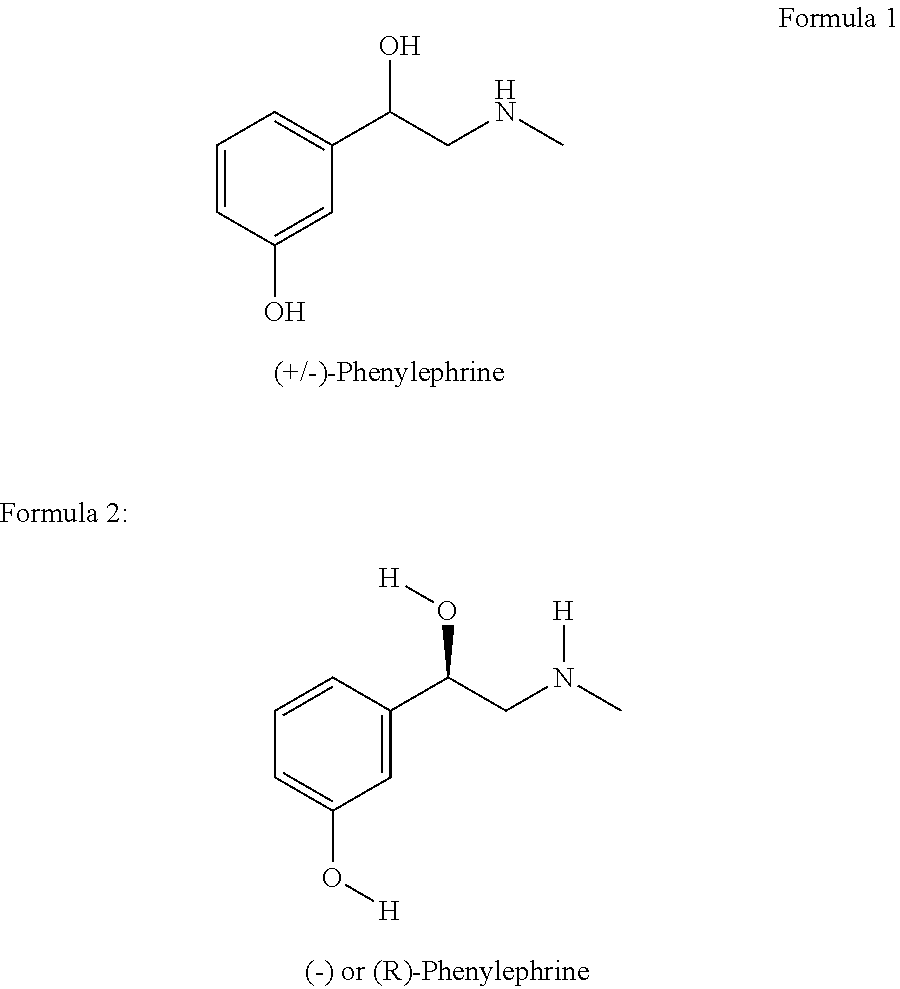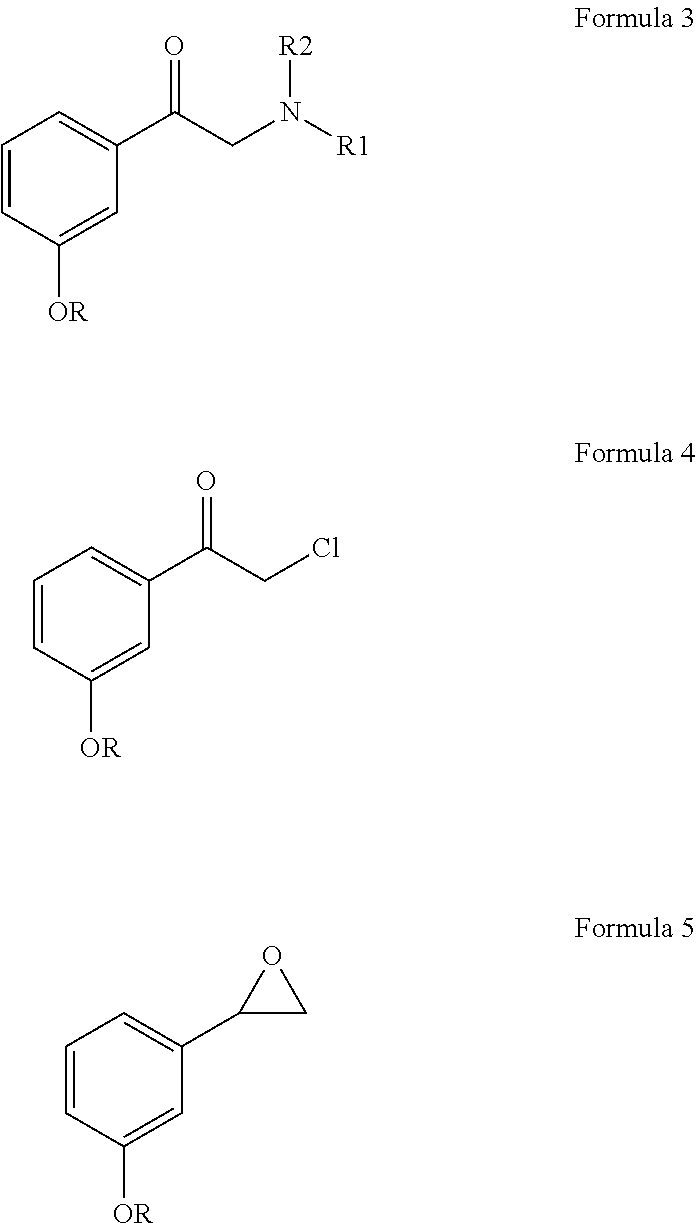Process for resolution of 1-(3-hydroxyphenyl)-2-methylamino ethanol
a technology of methylaminoethanol and process, which is applied in the field of new products, can solve the problems of no published method of resolution of racemic mixture, tedious recovery, and only crystallization of isomers of amino alcohols, and achieve good yield
- Summary
- Abstract
- Description
- Claims
- Application Information
AI Technical Summary
Benefits of technology
Problems solved by technology
Method used
Image
Examples
example 1
[0021](a) To 385 mL of methanol 27.7 g of R-naproxen (OR −61.9° c.=1 in chloroform) are added and stirred at ambient temperature until a clear solution is obtained. A solution of 20 g of racemic phenylephrine base is separately prepared in 195 mL of methanol by warming to about 65° C. When a clear solution is obtained this solution is rapidly added to the solution of naproxen. The mixture is stirred while slowly cooling to ambient temperature for a period of about 2 hours to complete salt formation. The mixture is then filtered through a sintered glass funnel or Buchner filter assembly with mild vacuum. The solid filter is washed with about 13 mL of methanol once. The filtrate is collected and reserved for recovery of the salt S-phenylephrine-R-naproxen and excess (unreacted) resolving agent. The isolated solid salt is dried in a vacuum oven at ambient temperature for two hours. Yield of practically dry off white crystalline solid was 18.6 g, i.e. 39.1% based on theoretical yield of...
example 2
[0026](a) Racemic phenylephrine hydrochloride (50.0 g, 0.2457 moles) was suspended in 450 mL of methanol to which solid sodium hydroxide (9.8 g, 0.2457 moles) was added and the reaction mixture was stirred for 30 minutes at ambient temp. To the reaction mass solid R-naproxen (56.5 g, 0.2457 moles, OR −50°) was added. The reaction mixture was warmed to 50-60° C., and then stirred for 1 hr at 50-60° C. The suspension was cooled to 25-29° C. and stirred for 30 minutes to obtain crystalline phenylephrine-R-naproxen salt. The salt was filtered and washed with 25 ml of methanol. The wet salt weighed ˜62.5 g (moisture content <0.75%). The filtrate and washings were combined and reserved for recovery of S-phenylephrine and R-naproxen.
[0027](b) The phenylephrine-R-naproxen salt (62.5 g) was suspended in 75 mL of purified water, pH adjusted to <2 with HCl (˜12 mL) at 25-35° C. and charged with 208 mL of toluene. The suspension was warmed to 75-80° C. and maintained for 30 minutes. The reactio...
example 3
[0032](a) Racemic phenylephrine hydrochloride (360 kg, assay 99.5%) is charged into the reactor and stirred for not less than 30 minutes at 25-35° C. Caustic soda flakes (71 kg) are charged into reactor and stirred for 30 minutes. The resolving agent (R)-naproxen (407 kg of OR −50°) is charged and the temperature is raised to 50-60° C., maintained for not less than 1 hour at 50-60° C., gradually cooled to 25-29° C., maintained for another 30 minutes and filtered. The wet cake of R-phenylephrine-R-naproxen salt is washed with 150 L of methanol. Yield ˜450 kg (wet).
[0033](b) The salt from step (a) above (900 kg) charged into a reactor containing 1080 L of purified water and the pH is adjusted to 32.3°, assay 99.89%.
[0034](c) Dry (R)-phenylephrine base (300 Kg) is charged into reactor containing 1200 L of isopropanol and pH is adjusted to less than 1 with IPA-HCl at 20 to 30° C. Then the temperature is raised to 55 to 65° C. The mass is gradually cooled and maintained for not less than...
PUM
| Property | Measurement | Unit |
|---|---|---|
| Time | aaaaa | aaaaa |
| Digital information | aaaaa | aaaaa |
| Temperature | aaaaa | aaaaa |
Abstract
Description
Claims
Application Information
 Login to View More
Login to View More - R&D
- Intellectual Property
- Life Sciences
- Materials
- Tech Scout
- Unparalleled Data Quality
- Higher Quality Content
- 60% Fewer Hallucinations
Browse by: Latest US Patents, China's latest patents, Technical Efficacy Thesaurus, Application Domain, Technology Topic, Popular Technical Reports.
© 2025 PatSnap. All rights reserved.Legal|Privacy policy|Modern Slavery Act Transparency Statement|Sitemap|About US| Contact US: help@patsnap.com


